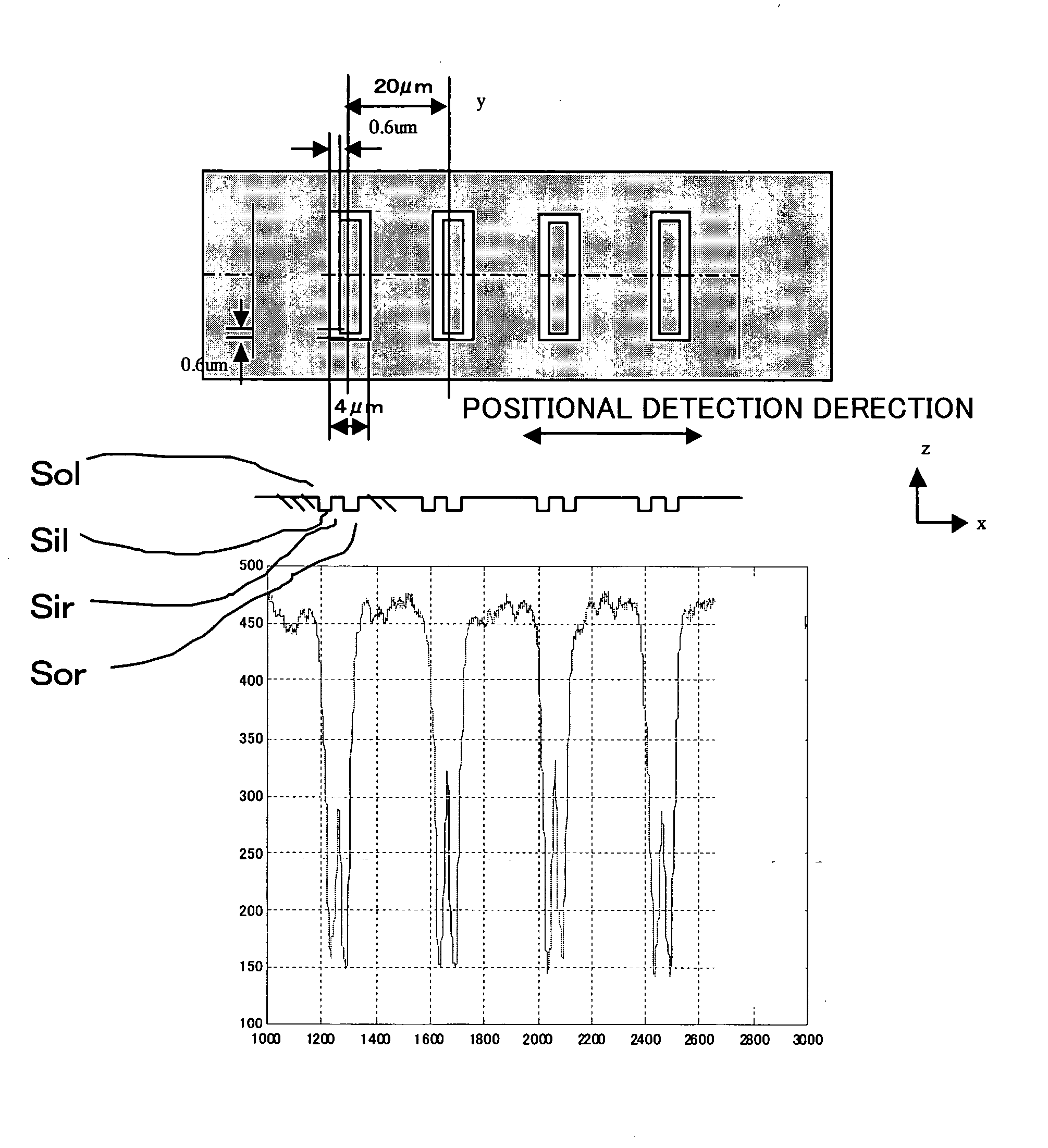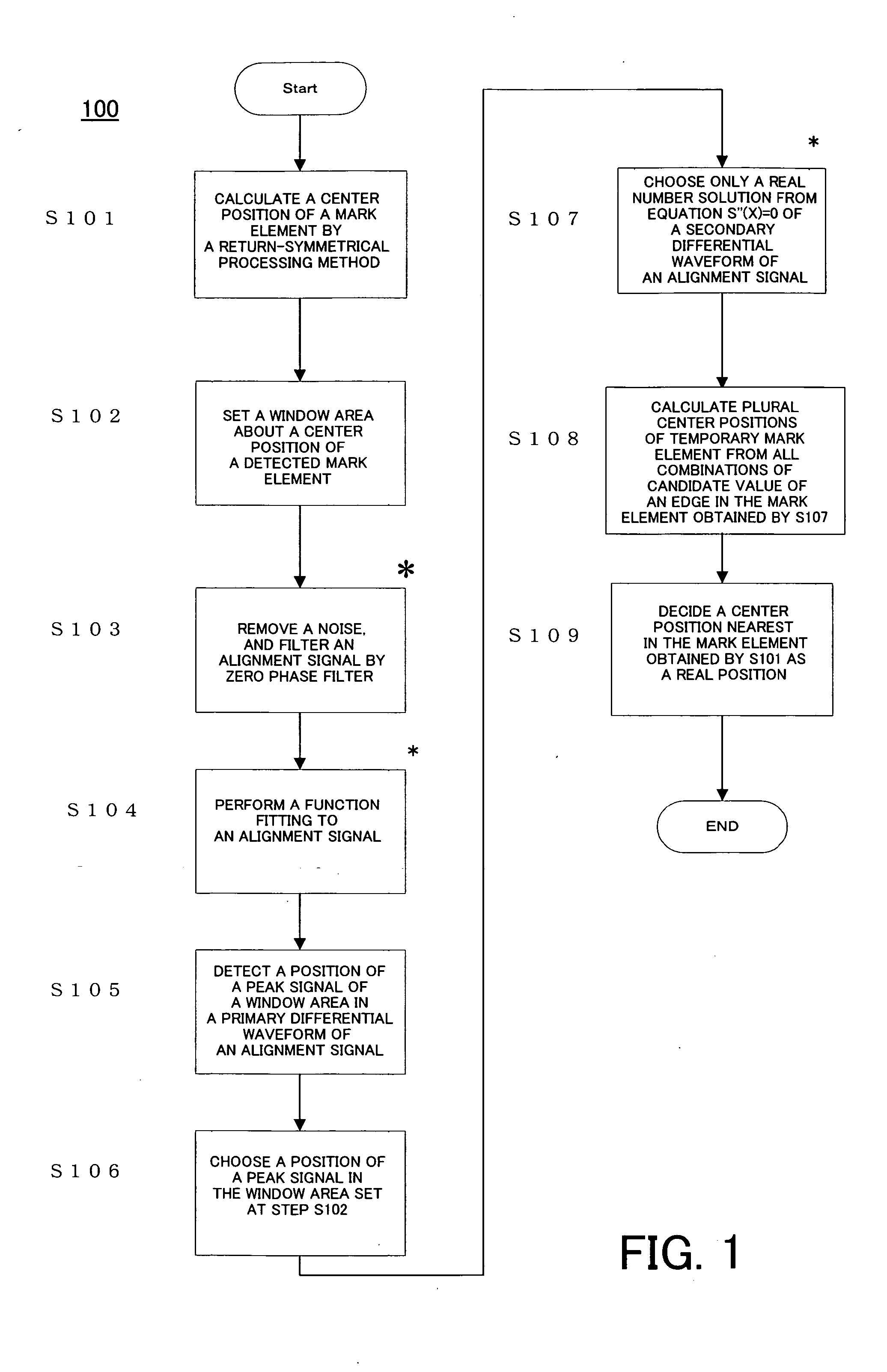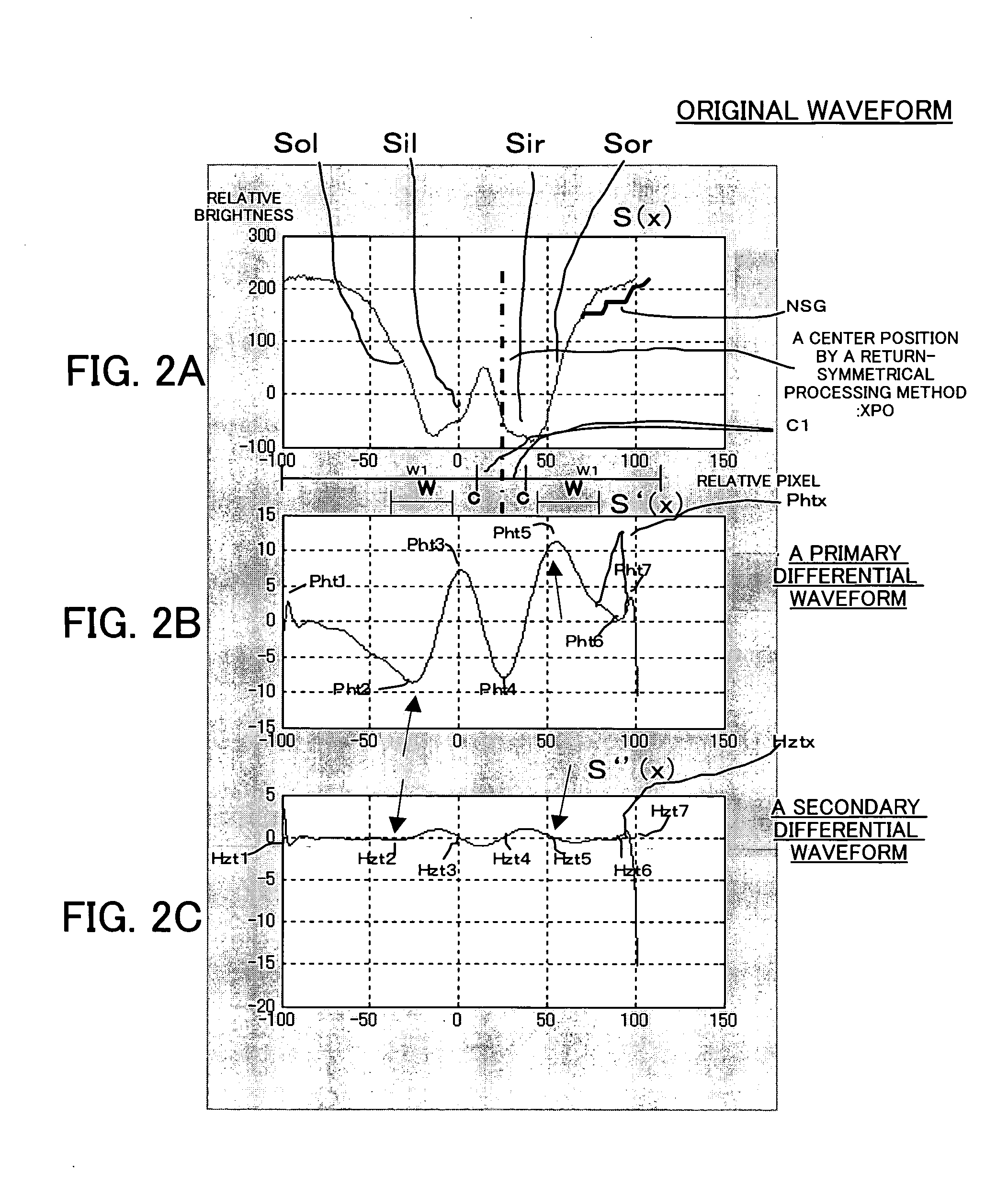Position detecting method
a detection method and position technology, applied in the field of position detection methods, can solve the problems of poor alignment accuracy, affecting the accuracy of positional detection, and notably displaying noise components in the edge differentiation, so as to reduce the asymmetry of alignment signal asymmetry and accurately detect the position
- Summary
- Abstract
- Description
- Claims
- Application Information
AI Technical Summary
Benefits of technology
Problems solved by technology
Method used
Image
Examples
Embodiment Construction
[0040] With reference to accompanying drawings, a description will now be given of a position detecting method of one embodiment according to the present invention. In each figure, the same element is designated by the same reference numeral, and a description thereof will be omitted.
[0041] A detail description will now be given of a return-symmetrical processing method. A return-symmetrical processing method is a kind of signal processing of pattern matching which determines a good position of coincidence by returning a waveform of an alignment signal.
[0042] The return-symmetrical processing method may clearly indicate a position, and finely detect a position when maintaining symmetric property about a center of a pattern (namely, an alignment mark) even if a waveform of the alignment mark changes. When a waveform of an alignment signal asymmetrically changes, a positional detection often has an error because a detected value of an extremal value in a center of a pattern becomes ...
PUM
| Property | Measurement | Unit |
|---|---|---|
| wavelength | aaaaa | aaaaa |
| wavelength | aaaaa | aaaaa |
| wavelength | aaaaa | aaaaa |
Abstract
Description
Claims
Application Information
 Login to View More
Login to View More - R&D
- Intellectual Property
- Life Sciences
- Materials
- Tech Scout
- Unparalleled Data Quality
- Higher Quality Content
- 60% Fewer Hallucinations
Browse by: Latest US Patents, China's latest patents, Technical Efficacy Thesaurus, Application Domain, Technology Topic, Popular Technical Reports.
© 2025 PatSnap. All rights reserved.Legal|Privacy policy|Modern Slavery Act Transparency Statement|Sitemap|About US| Contact US: help@patsnap.com



